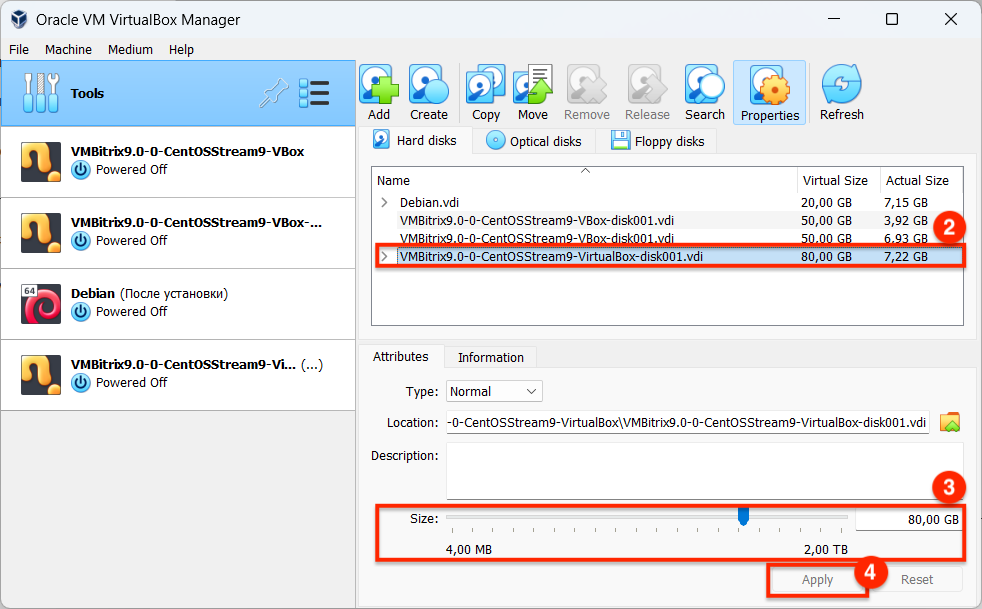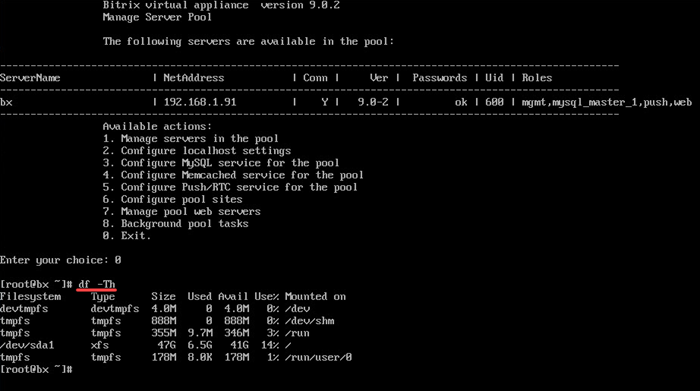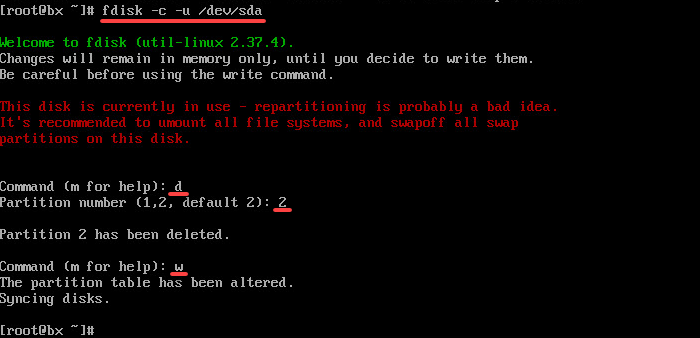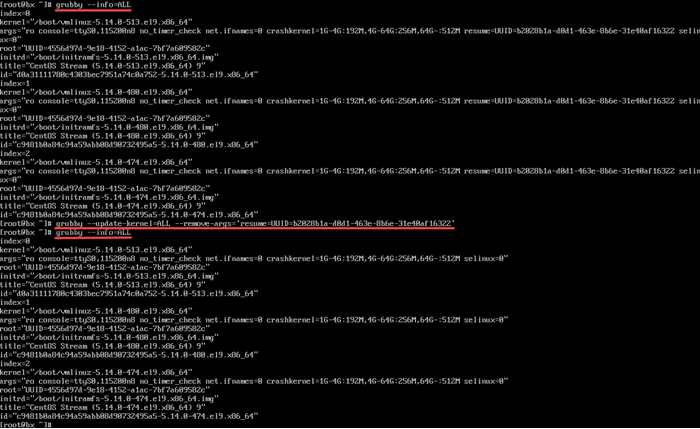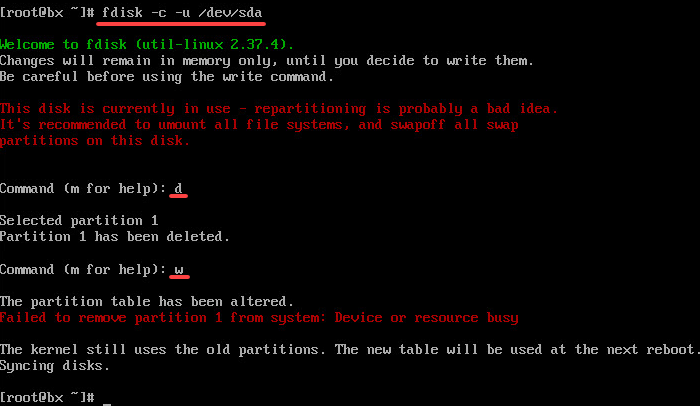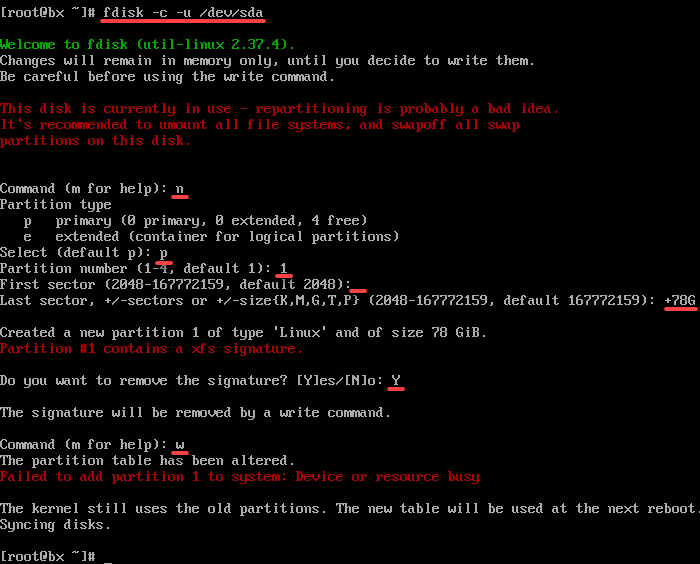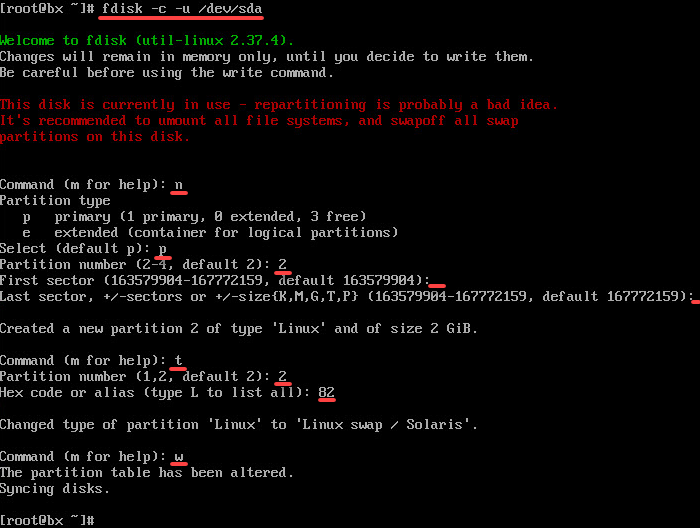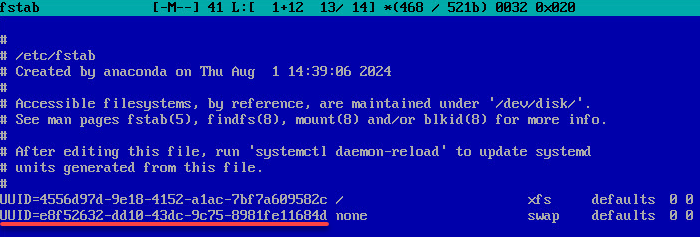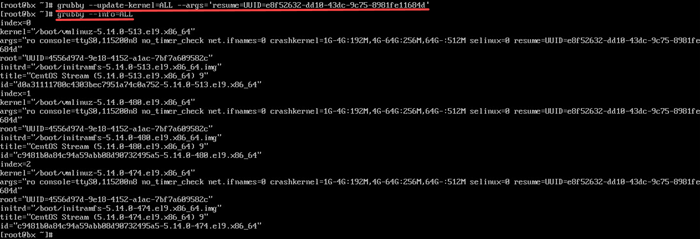Last Modified: 20.01.2025
|
|
|
Views: 623
Last Modified: 20.01.2025 Attention!
Sequence of actionsTo increase space available at the VA disk, complete the four steps as follows:
Swap — is a specially dedicated disk space, used by the system as backup space when employed ram memory is not sufficient. For Linux swap can be implemented in two ways: as a separate partition and as an individual file.
Step 1. Increase system disk space in hypervisorModify space available in the virtualization software: VirtualBox, VMWare or HyperV. You can find more details about such software in the documentation for corresponding software. Example for VirtualBox:
After you have increased the system disk inside the player, launch the Bitrix Virtual Appliance. Get authenticated under the 'root' user and switch to command string mode. To do that, select the menu item 0. Exit. You can check the current parameters for the disk using the following command: df -Th
Disk size didn't change. Partition on the disk /dev/sda1 is 47 GB space, the remaining space from current 50 GB is used by temporary tmpfs. Step 2. Disable and delete swap
Step 3. Increase main partition sizeTo increase space available at the disk, re-create the partition.
Step 4. Create and connect swap
The remaining action is to ensure that the system does not loose the created swap during relaunch.
Courses developed by Bitrix24
|

